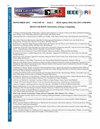A Connectivity Strategy for the Evaluation of Smart Grid Models Based on the Ethernet Technology
IF 1.3
4区 工程技术
Q3 COMPUTER SCIENCE, INFORMATION SYSTEMS
引用次数: 0
Abstract
A simulation strategy that enables data transmission between the modeled components of a Smart Grid is proposed in this paper. The proposed simulation strategy, referred to as the connectivity strategy, enables the integration of a physical communication network into Smart Grids simulations. The connectivity strategy comprises three steps: selection of Smart Grids functionality, data transmission over a TCP/IP network, and connectivity strategy evaluation. Each step is described to ensure transparency and reproducibility in Smart Grid simulations, addressing the limitations associated with the lack of specifications when a communication network is implemented into power systems simulations. Furthermore, a Hardware-in-the-loop (HIL) approach is presented for developing and evaluating the proposed connectivity strategy using the HIL technique. Through this approach, the strategy is validated by establishing the communication between simulation and embedded systems via a physical Ethernet network. In a case study, the use of the connectivity strategy to simulate a distribution system automation (DA) functionality is demonstrated. This simulation allows the evaluation of protection schemes in a Smart Grid using MATLAB/Simulink and a Texas Instruments development kit. Results show that the proposed connectivity strategy could estimate the communication delays for different simulation scenarios.基于以太网技术的智能电网模型评估连接策略
本文提出了一种可在智能电网的模型组件之间进行数据传输的仿真策略。所提出的仿真策略被称为 "连接策略",可将物理通信网络集成到智能电网仿真中。连接策略包括三个步骤:选择智能电网功能、通过 TCP/IP 网络传输数据和评估连接策略。每个步骤都有说明,以确保智能电网仿真的透明度和可重复性,解决在电力系统仿真中实施通信网络时缺乏规范所带来的限制。此外,还介绍了一种硬件在环 (HIL) 方法,用于利用 HIL 技术开发和评估所提出的连接策略。通过这种方法,仿真和嵌入式系统通过物理以太网网络建立通信,从而验证了该策略。在案例研究中,演示了如何使用连接策略模拟配电系统自动化 (DA) 功能。通过该仿真,可以使用 MATLAB/Simulink 和德州仪器开发套件对智能电网中的保护方案进行评估。结果表明,建议的连接策略可以估算出不同模拟场景下的通信延迟。
本文章由计算机程序翻译,如有差异,请以英文原文为准。
求助全文
约1分钟内获得全文
求助全文
来源期刊

IEEE Latin America Transactions
COMPUTER SCIENCE, INFORMATION SYSTEMS-ENGINEERING, ELECTRICAL & ELECTRONIC
CiteScore
3.50
自引率
7.70%
发文量
192
审稿时长
3-8 weeks
期刊介绍:
IEEE Latin America Transactions (IEEE LATAM) is an interdisciplinary journal focused on the dissemination of original and quality research papers / review articles in Spanish and Portuguese of emerging topics in three main areas: Computing, Electric Energy and Electronics. Some of the sub-areas of the journal are, but not limited to: Automatic control, communications, instrumentation, artificial intelligence, power and industrial electronics, fault diagnosis and detection, transportation electrification, internet of things, electrical machines, circuits and systems, biomedicine and biomedical / haptic applications, secure communications, robotics, sensors and actuators, computer networks, smart grids, among others.
 求助内容:
求助内容: 应助结果提醒方式:
应助结果提醒方式:


